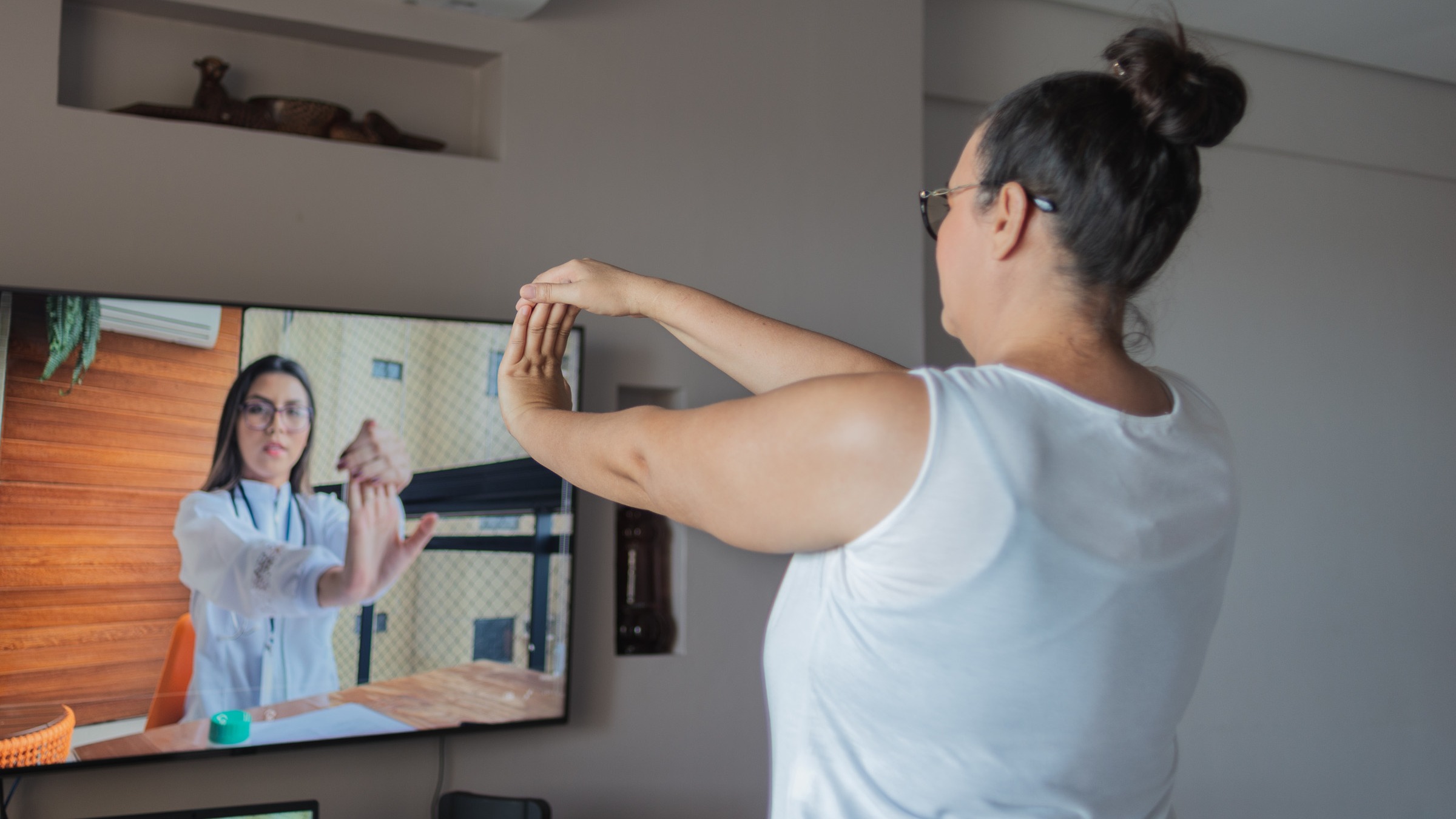Physical therapy is an ever-evolving field inundated with new technologies. One of the newest adaptations appearing within society is telehealth. Telehealth has its advantages and disadvantages in the field of physical therapy. This writing will discuss the research article Rethinking Telerehabilitation: Attitudes of Physical Therapists and Patients by Fereshteh Saaei and Susan Klappa. This article consisted of surveys sent to both physical therapists and patients to understand their thoughts on Telehealth.

The Patients’ Desire to Recover
61 patients completed the research survey. “The questionnaire involved 18 items… Quality of care was reported to be the most critical concern, followed by privacy, and friendly user experiences.” (Saaei et al.). Clients felt comfortable using the technology and portals to talk to their physical therapist.
The biggest concern I see on the patient’s side is a lack of effort. Often physical therapists turn their back to a patient and the patient slacks off. The PT may stay on call to watch the patient or have software to count repetitions. However, it’s more likely the PT and patient talk about progress and go their separate ways. This leaves the patient to their own devices and motivation. While the PT cannot control what the patient does after they leave, we do have control while in the facility. I would be frustrated knowing my patients weren’t giving it their all. Therefore, being present in facilities promotes accountability.
The most difficult problem to address barring sitting on call for hours with each patient. The next best option, mentioned in the article, is “Supervision during exercise interventions has been demonstrated to be the preferred approach, as it is associated with a superior influence on adherence with sustained improvements in functional capacity. This feature is achievable using AI, which provides both the therapist and patient invaluable information and outcome measures for further decision-making for optimizing movement.” (Saaei at el.). I could use the evolving AI to track and monitor the patient’s adherence better than I may be able to in person.
Patients’ Technological Difficulties
One of the biggest concerns from the PTs’ surveys was geriatric patients struggling to use the technological interface. While most younger patients will intuitively understand the system most older adults—who make up the vast majority of PT patients—will struggle to use technology and thus struggle to meet with their PT.
I’ve personally watched this. My grandmother suffered from Parkinson’s disease and needed physical therapy during the Covid pandemic. Because she was technologically inept, she missed many appointments and didn’t get the PT she needed for her disease. We watched her health decline and knew that could be a concern.
Knowing how stubborn the elderly can be, I must be creative to overcome this challenge. The simplest way would be a mini-seminar during their first visit. I could set up their account, walk them through the steps of logging in, write down their username and password, and coach them through to make it as simple as possible. The other option would be calling or Facetiming them. They would simply have to accept the call and we would hope it works and get the information we both need.
“The main issue is taking the physical out of physical therapy.”
The Physical Aspect
At the start of the article, there is a brief discussion of the general positives and negatives that telehealth has afforded individuals. The positives focus on the affordability and availability of the services. The negatives focus on the lack of physical contact in telehealth and how that impacts the patient receiving the exercise.
The main issue is taking the physical out of physical therapy. I feel the affordability and availability are obvious. They do not need a place to go in person and that saves money. The article states “Lack of physical contact affects assessment required to exclude red flags as well as performing special tests to diagnose the cause of movement impairments and limitations” (Saaei et al.). This means it’s impossible to do an assessment when you are not touching the person and that leads to poor results when assessing a patient. This would be especially difficult for me as I understand physical therapy as manual manipulation, hands-on assessments, and teaching the patient why I am doing what I am doing.
Though the non-physicality of telehealth would be difficult, I am cultivating skills to overcome that barrier. I have a Functional Movement Screening certification from Functional Movement Systems. This allows me to do basic assessments virtually by walking them through the movements step by step. Understanding what causes certain pains will allow me to design movements to understand what the patient is suffering from.

In conclusion, telehealth could be a great tool used to make physical therapy more accessible and less expensive for patients. It could also decrease stress and concerns about patients for the PT. While the negatives of telehealth are harsh, the potential positives are lofty. Telehealth is here to stay. It is now our job to maximize its benefits and minimize its drawbacks.